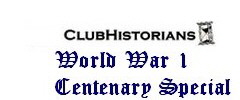|
Solly’s working men’s clubs started springing up all over the country with the help of the WMCIU. Many soon abandoned the teetotal rule as beer was a popular drink and selling it helped to fund club expansion and added to their facilities for members.
There was a need for a club in Poperinge and Talbot House was soon filling this local need. But now we can understand how it came into existence indirectly through beer and brewing profits- with similarities to the history of working men’s clubs.
What’s in a Name?
Quite a lot! And here we can pick up another interesting parallel with the early club movement. Henry Solly considered very carefully what to call his club organisation. He wanted to see an educational strand to club life but not to make that a priority. Nor did he want any reference to religion or temperance in the name, believing such terms would be off-putting rather than welcoming. He settled on the WMCIU for his new organisation, which seemed to work
as newly established clubs were soon affiliating to it.
Neville Talbot and Tubby Clayton, both chaplains, not surprisingly decided on the simple ‘Church House.’
 |
Talbot House, Poperinge (Photo: R. Cherrington, November 2014)
Lt. Col May was passing by when they were preparing the new sign and he stopped his car immediately upon seeing it. He told Neville Talbot that this name would close the club right away, as it would frighten off the very men they wanted to attract. They would continue to use the estaminets instead.
One Size Fits All
One Website - All Devices
|
